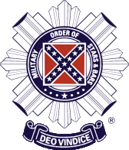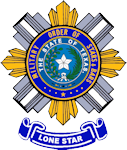| |
ALBERT SIDNEY JOHNSTON
1803 – 1862
Johnston was born in Washington, Kentucky, February 2, 1803. He was educated at Transylvania University and at West Point, from which he graduated in 1826. He served in the army for a number of years and saw action in the Black Hawk Wars before resigning in 1834. In 1836 he went to Texas and enlisted as a private in the revolutionary army. Within a year he rose to be the senior brigadier general and chief commander. He was secretary of war of the Republic of Texas from 1838 to 1840. After Texas was admitted to the Union, he became colonel of a regiment of Texas volunteers in the Mexican War and fought at Monterrey. He was reappointed to the U S Army in 1849 and served on the Texas frontier, becoming colonel of the 2nd Cavalry in 1855, and was in command of the Department of Texas from 1856 to 1858. He led the Utah expedition against the Mormons in 1857 and was made brevet brigadier general for his services. From 1858 to 1860 he commanded the department Utah.
When Texas seceded from the union Johnston was commanding the Department of the Pacific. He resigned his commission on May 3, 1861, and was appointed a full general in the Regular Army of the Confederacy on August 31, 1861, to rank from May 30, 1861. Placed in command of all Confederate troops west of the Alleghenies, he strove to implement the current Richmond strategy of holding all points of the invaded states with isolated detachments. After concentrating an army at Corinth, Mississippi, he successfully attacked Grant at Shiloh, but was mortally wounded in the engagement and bled to death on the battlefield, April 6, 1862. It has been determined that the site of his death at Shiloh is actually about 100 yards north of where his marker is currently placed. Johnston’s military capabilities are a matter of some controversy. Confederate President Jefferson Davis had implicit confidence in him and, after some entreaties to remove him from command after the loss of Forts Henry and Donelson, stated that “if Sidney Johnston is not a general . . . we have no general”. He is buried in the Texas State Cemetery in Austin, Texas.
| |






